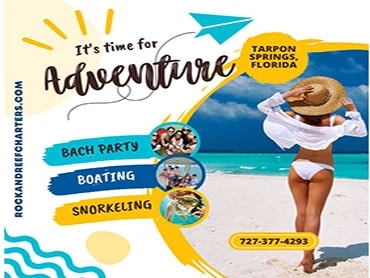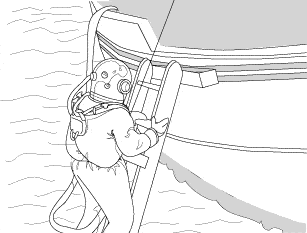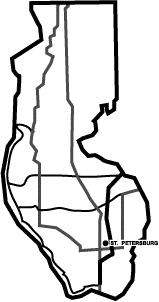Tarpon Springs Culture and History
| What is the Tarpon Springs Epiphany celebration?
Tarpon Springs History - The first settlers in the area now known as Tarpon Springs were A.W. Ormond and his daughter, Mary. They arrived in 1876. They built a cabin near Spring Bayou. J.C. Boyer, an adventurer from Nassau, sailed into the Bayou. He and Mary Ormond were soon married. One year after the arrival of the Ormonds, George Inness, an American landscape artist, discovered the beauty in the Bayou. He and his son, George, Jr., painted the scenes found in the area. Mary was very pleased with her home. She especially liked the great fish that inhabited the Bayou. They would leap into the air and spray water. In 1879, she named the small settlement Tarpon Springs. (Actually, the fish were mullet, not tarpon!) In 1880, Hamilton Disston, a wealthy saw manufacture, bought four million acres of the central west coast of Florida from the Governor for 25 cents an acre. This saved the state from bankruptcy. Included in the purchase was Tarpon Springs. In 1884, a post office was established in Tarpon Springs. Soon the railroad arrived and a depot was built to accommodate passengers and freight. Through the efforts and investments of Disston, Tarpon Springs was fashioned into an exclusive winter resort for wealthy Northerners. In 1887, Tarpon Springs was incorporated. It had a population of 52 residents. John Cheney, a promoter associated with Disston, discovered money could be made by harvesting the sponges growing in the waters of the Gulf. Although Tarpon Springs was successful as a resort, it wasn’t long before the sponge industry became the community’s most important industry. By 1890, the sponge industry was firmly established in Tarpon Springs. The Cheney Sponge Company sold almost a million dollars worth of sponges that year.
In the next few years, experienced divers from Greece were brought to Tarpon Springs. By using rubberized diving suits and helmets, they increased harvests. By 1905, over 500 Greek sponge divers were at work using 50 boats. |
||
| The early sponge divers created a need at the docks for eating places for the boat crews. Then as news of the industry grew, people began coming to the docks to see the sponges. Shops opened so people could buy the sponges and other souvenirs.
Sponge buyers created the Sponge Exchange in 1907. A building with a courtyard was erected in which each sponger could store his catch while awaiting the auctions that took place twice a week. With the perfection of deep-sea diving equipment, the dollar amount of sponge harvests continued to increase. Divers were able to go deeper into the sea for longer lengths of time. For 30 years, the sponge industry was the largest industry in Florida—larger than citrus or tourism. Tarpon Springs was known as the “Sponge Capital of the World.” In the 1940s, blight reduced the growth of sponges. By the 1950s, sponging as a profitable industry was nearly wiped out. However, in the 1980s, new sponge beds were found. Now, Tarpon Springs is back to being a leader in the world’s natural sponge market.
All aspects of the sponge industry are available to view in Tarpon Springs, from the harvesting of the sponges, all the way to the auctions that are now held weekly at the Sponge Docks. In addition to seeing the history of sponge harvesting, visitors can experience the Greek influence. Greek restaurants and shops are scattered throughout the area. Seafood, Greek salads, and pastries are particularly popular. Many visitors attend Greek Festivals. St. Nicholas Greek Orthodox Cathedral was modeled after the great Byzantine cathedrals such as St. Sophia Cathedral in Constantinople and is open daily to visitors. Today, Spring Bayou, site of the first settlement, is still a delightful place. Visitors can stroll along the winding streets and see houses that reflect the grandeur of the wealthy who came to Tarpon Springs each year to escape the harsh Northern winters. Tarpon Springs still has a peacefulness and quaint charm. |
|
|
Click here to find out how your business can benefit from advertising on SpongeDocks.net






